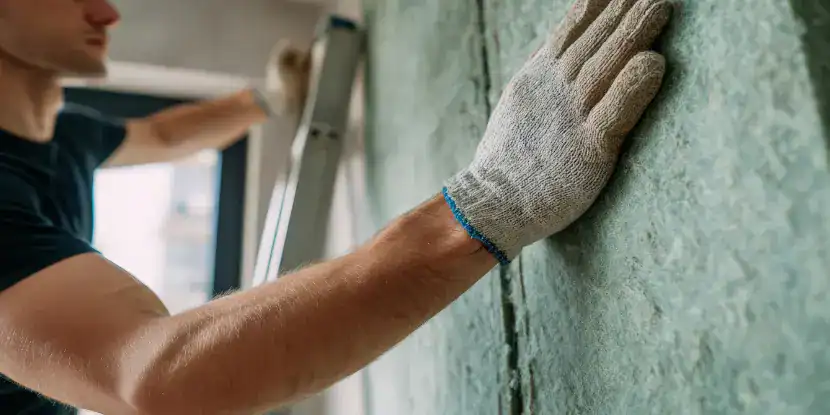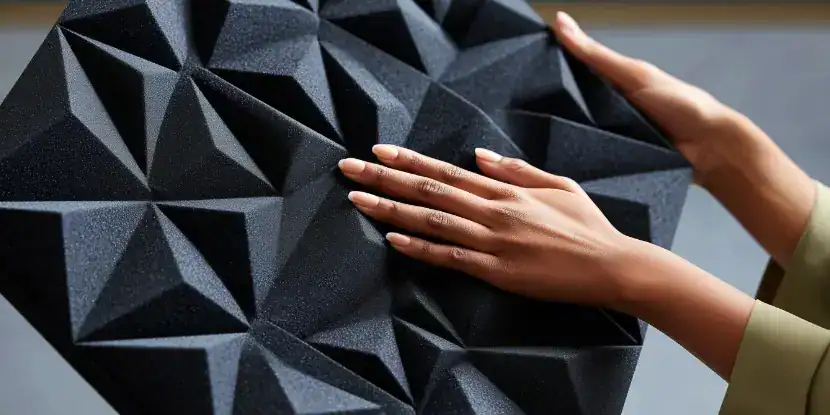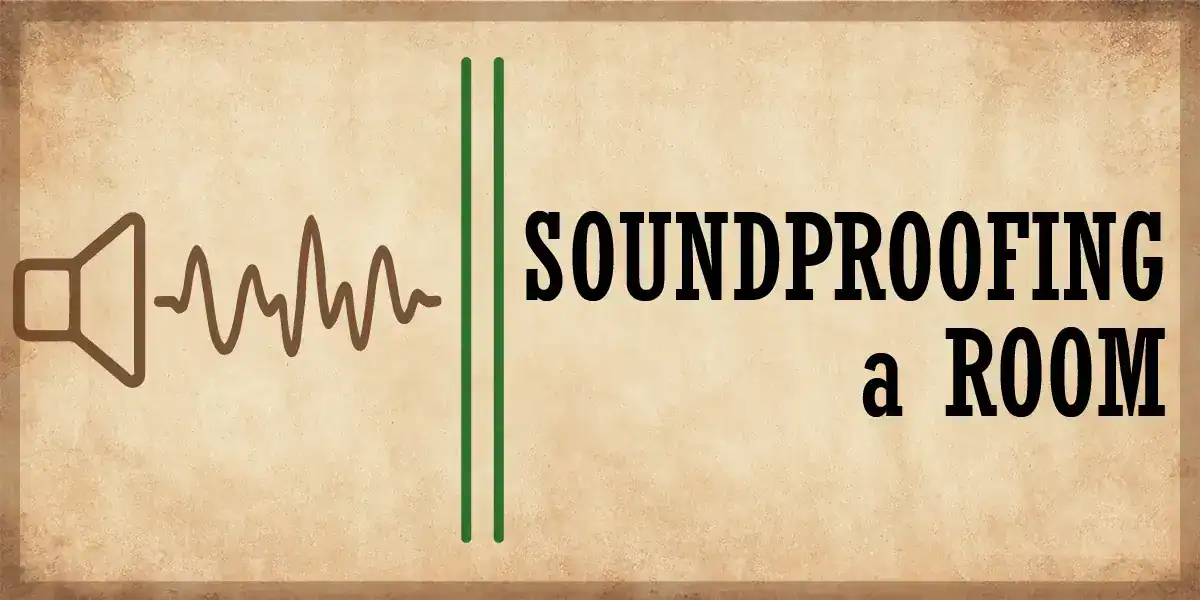Noise can disrupt your sleep, focus, and sense of well-being.
Traffic commotion, loud neighbors, and echoing sounds can overwhelm your nervous system. Humans evolved in quieter settings. There was no piped-in music in the caves. No Taylor Swift and unmuffled motorcycles.
Fortunately, with affordable materials and a few smart DIY fixes, you can engineer a quieter room for better rest.
The Science of Sound & Stress
Here’s how noise affects you:
- Interrupted sleep: Sounds above 40 decibels, like traffic or conversation, disrupt deep sleep cycles, even if you don’t fully wake up.
- Stress overload: Background noise increases cortisol and adrenaline levels, leading to anxiety, irritability, fatigue, and even weight gain.
- Reduced focus: Noise levels above 55 dB (roughly a loud conversation) can lower concentration and memory performance by up to 30 percent.
- Silence regenerates the brain: A Duke University study found that two hours of silence daily led to new brain cell growth in the hippocampus — the part of the brain tied to learning and emotion.
After loud or unpredictable noise, your nervous system can stay tense and unfocused for hours.

If this guy lives next door, you’ll definitely need soundproofing.
Soundproofing a Bedroom
Do you know someone who’s always grumpy in the morning? Maybe even you? Restless sleep may be the problem.
Follow these simple guidelines to create a peaceful bedroom sanctuary:
- Seal gaps: Apply weatherstripping or acoustic caulk to doors and windows. You’ll save on energy, too!
- Hang thick curtains: Thermal or blackout curtains block noise and light.
- Position rugs: Thick rugs or carpets with foam pads absorb echoes on hard floors.
- Use soft décor: Upholstered headboards, fabric wall art, and tapestries all dampen sound.
- Mask remaining noise: A fan or white-noise app provides steady background sound that covers up disruptive noises.
- Rearrange furniture: Position wardrobes or bookcases against noisy walls to block sound transfer.

A bedroom lined with decorative sound absorption panels.
Soundproofing for a Home Recording Studio
A few low-cost tips can create a home recording space with solid results:
- Build DIY acoustic panels: Wrap rock wool or fiberglass insulation in fabric. Each panel costs roughly $15–$25 and makes a huge difference.
- Make bass traps: Roll towels or foam into corners to absorb low frequencies that muddy recordings.
- Hang moving blankets: Drape them on walls to reduce reflections and echo.
- Use isolation pads: Place them under speakers, microphones, or amplifiers to prevent vibration noise.
- Treat reflective surfaces: Place a rug underfoot and curtains behind your mic to minimize sound bounce.
- Record in small spaces: A closet lined with clothes makes a great vocal booth.
Budget tip: Start with a few panels in key spots — behind your mic and at early reflection points — before covering every wall.

Thick rugs and padded furniture can reduce sound reflection in a home recording studio.
Soundproofing for a Home Office
A quiet workspace boosts focus, especially during calls or creative work.
- Weatherproof your door: Apply foam tape around the frame and add a door sweep at the bottom.
- Use soft furnishings: Curtains, area rugs, and upholstered chairs all absorb sound.
- Hang acoustic foam or fabric panels: Place them behind your desk to cut echo during video calls.
- Block shared-wall noise: Position full bookshelves or file cabinets against noisy walls.
- Add white noise: A small desktop fountain or air purifier helps mask distractions.
- Move strategically: If possible, keep your desk away from hallways or shared walls.
Pro tip: A loaded bookcase is an effective, affordable sound barrier. Books absorb sound surprisingly well.

A worker installs an acoustic insulation panel on a wall.
Materials That Work (& What to Skip)
Affordable and Effective
- Weatherstripping and door sweeps: Cheap and highly effective for sealing gaps.
- Heavy curtains: Thermal or blackout curtains add mass and block sound.
- Rugs with padding: Absorb floor noise and reduce echo.
- Moving blankets: Inexpensive and great for temporary or DIY setups.
- Rock wool or fiberglass panels: DIY acoustic panels deliver professional results.
Skip These
- Egg cartons: They don’t absorb sound effectively and are a fire hazard.
- Thin foam tiles: They help with echo, but do little to block noise from entering or leaving a room.
- Acoustic paint: Marketing hype with little real-world impact.
Focus on adding mass, sealing gaps, and absorbing sound for the biggest improvement.

Foam panels are easy to install and cheap.
FAQs: Soundproofing on a Budget
Q: What’s the cheapest way to soundproof a room?
Seal gaps around doors and windows with weatherstripping or acoustic caulk. Add rugs, curtains, or fabric wall hangings to absorb sound. Each of these simple steps reduces noise effectively and affordably.
Q: Can I soundproof a room without renovations?
Most DIY soundproofing doesn’t require permanent changes. Hang moving blankets, add rugs, rearrange furniture, and use door sweeps to reduce noise without the need for construction.
Q: How much does DIY soundproofing cost?
Basic soundproofing measures, such as weatherstripping, rugs, and curtains, can cost as little as $50–$100. DIY panels run about $15–$25 each. Full-room treatments usually stay under $300.
Q: What’s the difference between soundproofing and sound absorption?
Soundproofing blocks sound transfer. Absorption reduces echo inside. Most budget projects focus on absorption.
Q: Do acoustic panels really work?
Yes, especially for reducing echo and improving audio clarity. They won’t block sound from traveling between rooms, but they make a huge difference in how sound behaves inside a space.
Q: How do I soundproof a bedroom for better sleep?
Seal gaps around doors and windows, hang thick curtains, add rugs, and use soft décor to absorb sound. A white-noise machine or fan can help mask remaining noise, promoting deeper sleep.
Q: Can I soundproof a home office on a budget?
Weatherproof your door, add soft furnishings, hang acoustic panels, and position furniture strategically. A bookcase against a shared wall works wonders for blocking noise.
Q: What’s the best material for DIY acoustic panels?
Rock wool or fiberglass insulation wrapped in fabric is the most effective option. Each panel costs $15–$25 and significantly improves sound quality in home studios and offices

